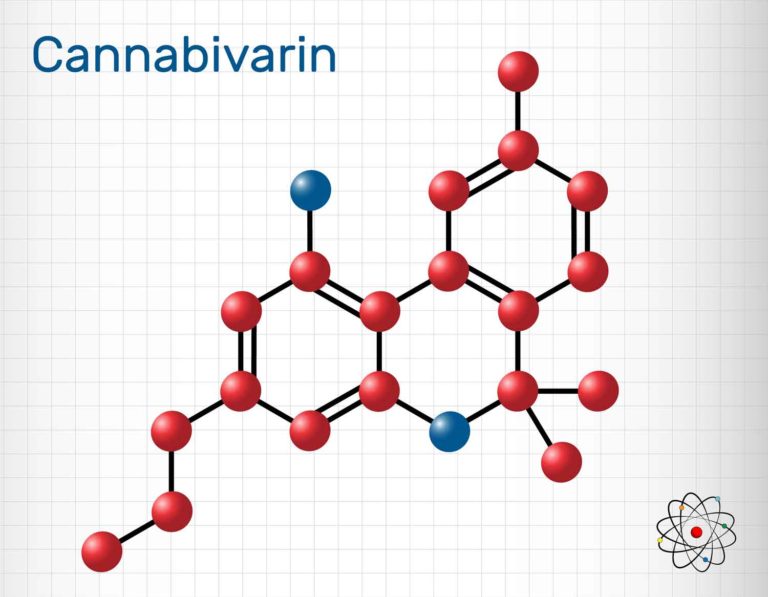
120. That’s how many known cannabinoids are in the cannabis plant. A few cannabinoids are known among the general public. Delta 9 is the main psychoactive cannabinoid in marijuana that creates the euphoric high that consumers want. There’s also CBD, a non-psychoactive cannabinoid shown in research and reported by consumers to have many beneficial effects. But what about the other cannabinoids? What are they and what do they do? Scientists are actually still figuring that out. But there is some information about some of them. Let’s take a look at the cannabinoid CBV.
Cannabivarin
CBV, known as cannabivarin as well as cannabivarol, is a non-psychoactive cannabinoid similar to CBN. It’s the second most abundant cannabinoid within the plant itself. But if you pick a fresh plant and break it down into its different cannabinoides, you would hardly find any of it. That’s because CBV is an oxidative form of another cannabinoid, THCV. This makes CBV interesting, because if you consume CBV and take a drug test, you will test positive for THC even if CBV is more abundant in your system.
Research
Like many other cannabinoids, there is very little research surrounding CBV. There is potential for the cannabinoid to affect the endocannabinoid system within the human body. However, nothing can be stated for certain.
Because of CBV’s similarity to CBN, scientists have speculated what CBV could do. These speculations include helping with mood disorders, pain, appetite control, sleep-work cycle, and tumor reduction. Nothing can be stated yet. But since the reclassification of hemp thanks to the Farm Bill in 2018, the avenue for hemp research, which would include the cannabinoid CBV, would be open for further studies.
Make sure to check back for more cannabis and hemp related news.